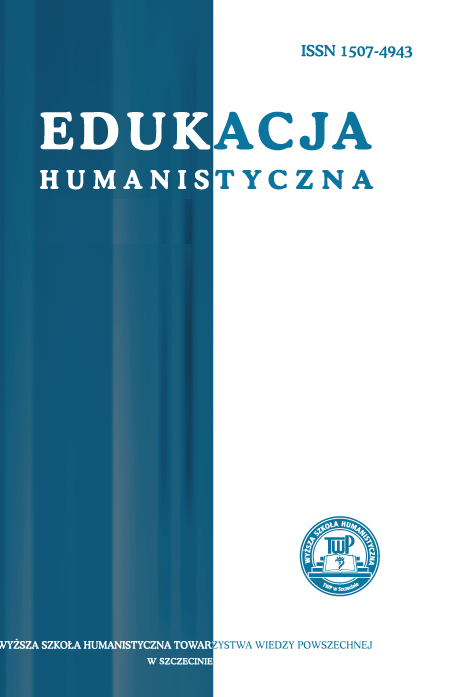Uwarunkowania stosunku gimnazjalistów z klas integracyjnych i nieintegracyjnych do Innych
Determinants of middle school students’ attitudes to the Others
Author(s): Katarzyna SmoterSubject(s): Education, Sociology
Published by: Wydawnictwo OR TWP w Szczecinie
Keywords: determinants of middle school students’ attitudes to the Others; middle school students; social exclusion
Summary/Abstract: The article presents the results of the research affects middle school students’ reference to the Othersin the context of sociodemographic, media, familial conditions connected with peer groups, schoolconditioning and related to local environment. I use the term „Others” which means people at risk of socialexclusion. I pointed to four factors of distinctness and six categories of Others: first – disability: peoplewith Down syndrome and people in wheelchairs, second: ethnic and race minorities: Roma and blackpeople, third: economic status – the poor, fourth – religion: Jehovah’s witnesses. Research group involvespupils of middle school, strictly saying 3rd grade from inclusive school and school for all in Cracow.Given results determine complex issue. Students from school for all are more accepting towardOthers than pupils from inclusive school. However, differences are not statistically significant. It meansthat attendance to inclusive class does not have an influence on higher level of Others acceptance. Thereare some aspects affecting middle school student’s positive attitude towards Others, i.a.: contact withpositive contents, concerning the Others, presented during participation in events realising aims of antidiscriminationand intercultural education, contact with the Others in peer groups and also inneighbourhood (local environment).There is important to introduce various activities related to knowledge transfer, creating positiveattitudes and youth competence to engage activities regarding intercultural education and antidiscriminationeducation. That realization should not have a character of disposable “action” but be a part of wellthought, regularly realized strategy penetrating whole of school life.The article presents the results of the research affects middle school students’ reference to the Othersin the context of sociodemographic, media, familial conditions connected with peer groups, schoolconditioning and related to local environment. I use the term „Others” which means people at risk of socialexclusion. I pointed to four factors of distinctness and six categories of Others: first – disability: peoplewith Down syndrome and people in wheelchairs, second: ethnic and race minorities: Roma and blackpeople, third: economic status – the poor, fourth – religion: Jehovah’s witnesses. Research group involvespupils of middle school, strictly saying 3rd grade from inclusive school and school for all in Cracow.Given results determine complex issue. Students from school for all are more accepting towardOthers than pupils from inclusive school. However, differences are not statistically significant. It meansthat attendance to inclusive class does not have an influence on higher level of Others acceptance. There are some aspects affecting middle school student’s positive attitude towards Others, i.a.: contact withpositive contents, concerning the Others, presented during participation in events realising aims of antidiscriminationand intercultural education, contact with the Others in peer groups and also inneighbourhood (local environment).There is important to introduce various activities related to knowledge transfer, creating positiveattitudes and youth competence to engage activities regarding intercultural education and antidiscriminationeducation. That realization should not have a character of disposable “action” but be a part of wellthought, regularly realized strategy penetrating whole of school life.
Journal: Edukacja Humanistyczna
- Issue Year: 2016
- Issue No: 2
- Page Range: 101-112
- Page Count: 11
- Language: English, Polish

